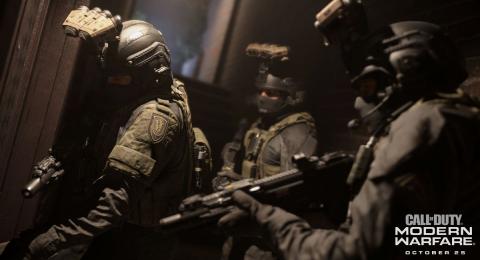
Call of Duty games aren't known for pushing graphical boundaries — at least they haven't been for some time. They've been the poster child of console ports, proving that resolution and frame rate can be sacrificed in the name of a couple of extra visual details, while riding the coattails of an older engine. Not so with the upcoming Modern Warfare, however.
As explained in a recent blog post by Infinity Ward studio head, Michael Drobot:
"Previously, we couldn’t push as many triangles or as much geometry. The new system allows us to push roughly five times more geometry per frame than we used to on consoles. Previous Call of Duty games were pushing around three million polygons per frame, [up to around] five million. Recently, we raised the artificial limit we had imposed on our game engine; to 16-17 million polygons per frame. We’ve had it up to silly levels; 24 million triangles per frame, and this is all to ensure we get all the data we have grabbed and match it in the game."
We're also told there will be new volumetric lighting effects, including improved dust, dirt, gas, and aerosols. They'll be reactive to the environment too, so when more dust or gas is in the air, the lighting will change, and vice versa. It will also support real time ray tracing and Nvidia's adaptive shading technologies.
All of this is in service to a better looking game, but we're told that Infinity Ward is taking this Call of Duty in a much more serious direction. The tone will be less fantastical run and gun (with as little Kit Harrington and Conor McGregor in space as we can get) and more a hard knocks, war is hell, sort of experience.
Call of Duty: Modern Warfare is set to release on PC, Xbox One and PS4 on October 25.








